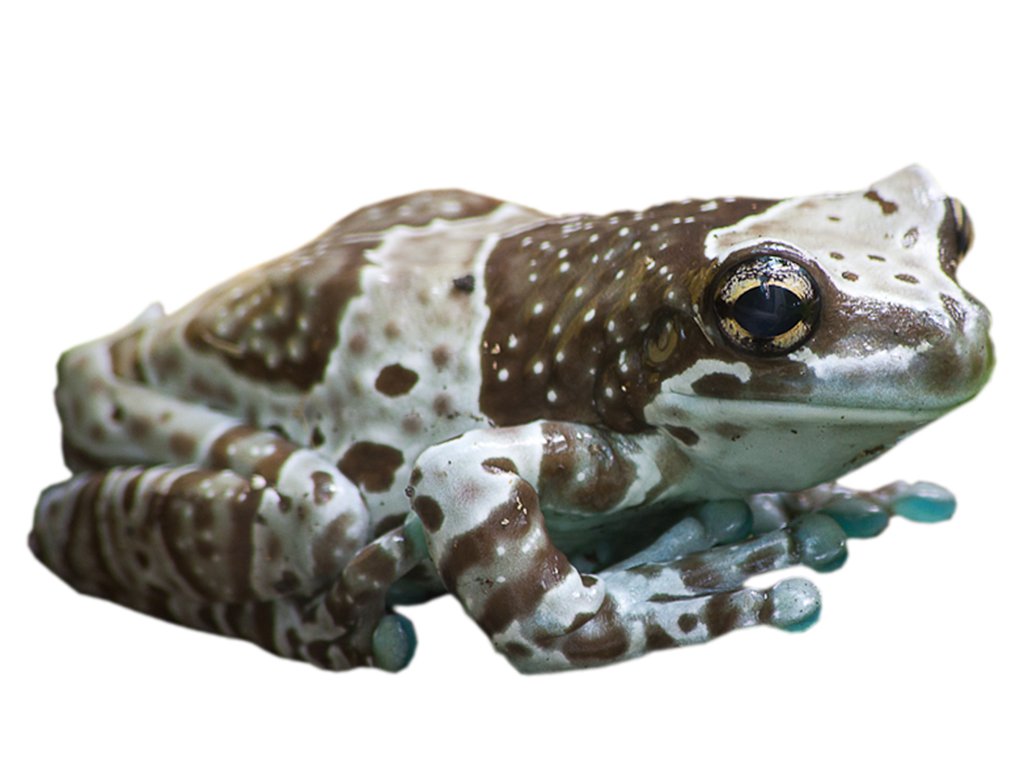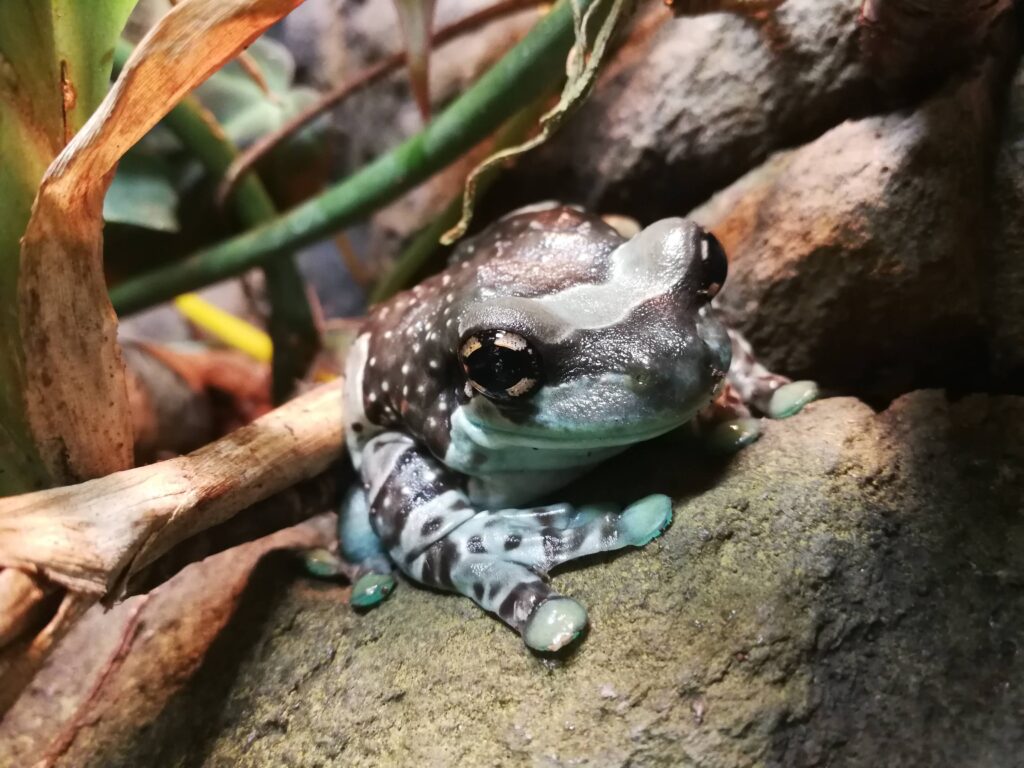Amazon Milk Frog
Trachycephalus resinifictrix

Never comes down to the ground
The Amazon milk frog is a real acrobat. Its large, sticky toes can carry 14 times the frog’s own weight and thanks to them, the frog can swing between branches and leaves. The Amazon milk frog spends its entire life in the trees – which means that the destruction of the rainforest is a serious threat to its survival.

Photo: Ellika-Nordström-Malmö-Museer
Looks like bird droppings
The female Amazon milk frog lays her eggs in a pool of water among the trees, e.g. in a tree cavity or at the centre of the overlapping leaf bases of bromeliads. The eggs hatch after only a day. It then takes a few weeks for the tadpoles to develop into small frogs. Young milk frogs have more contrast in their colouring than older frogs, which actually makes their camouflage better. A white body with dark spots makes the frogs look like bird droppings when they lie still on the branches.
Toxic fluid
The Amazon milk frog is named after the milky white fluid that it excretes through glands on its back when it becomes frightened or stressed. The fluid is toxic and tastes bad, and it reduces the risk of predators eating the frog. The frog is sometimes called “sapo de canoeiro” by locals in its native habitat. It means “canoeist frog” and refers to the sound that the frog emits. Its loud croaking is similar to the sound that an oar makes when it slides along the edge of a canoe.
Distribution worldwide

The Amazon rainforest.
Threat based on the Red List

Trade regulations
CITES: Not listed.